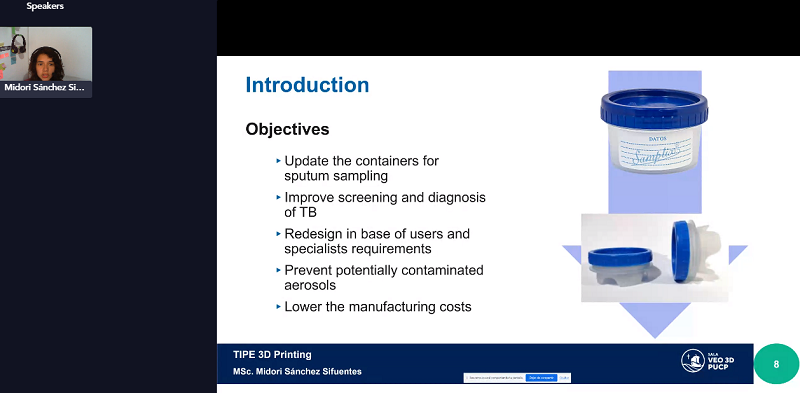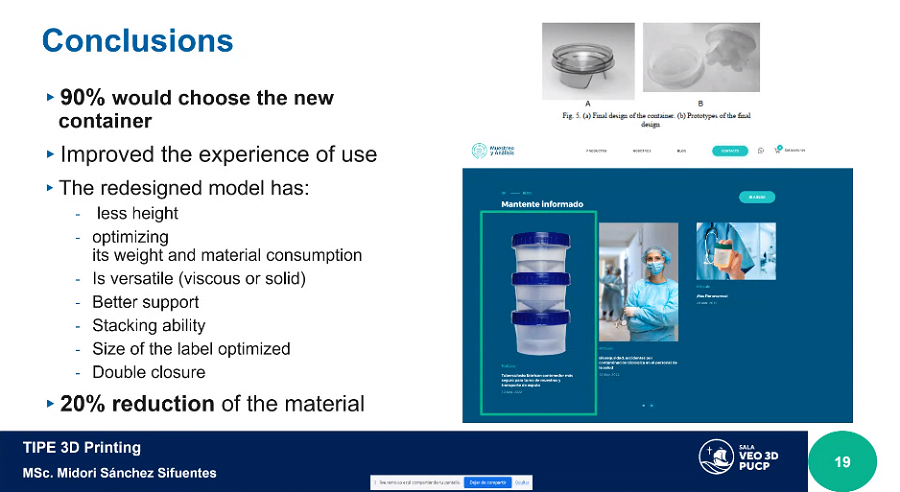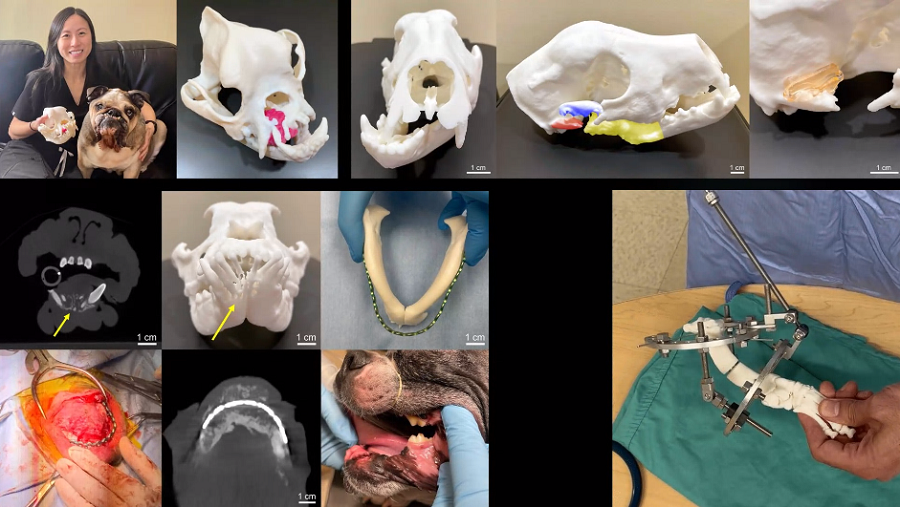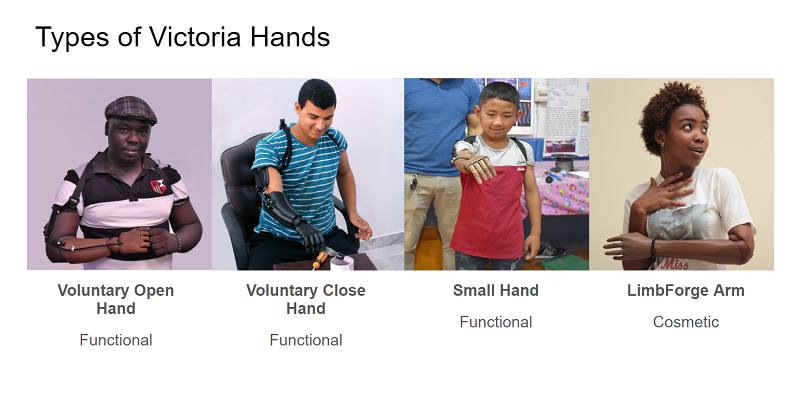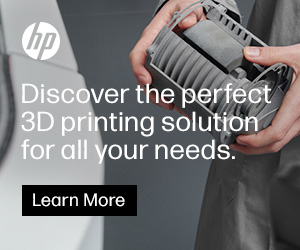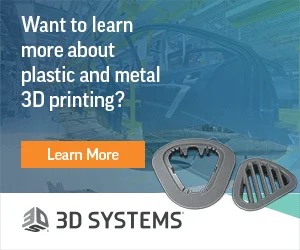Medical, Automotive, and Food: 3D Printing Applications at TIPE 2023
In a previous post on the topic, I discussed the third annual Technology, Industry, People, and Economics (TIPE) virtual summit from the nonprofit Women in 3D Printing (Wi3DP). With over 180 female speakers, 50 sponsors and 15 hiring companies at the virtual career fair I was blown away by how packed the event was with critical information about the additive manufacturing (AM) industry. While my last article went into depth about technical storytelling, quality in AM, and 3D printing education, one thing that TIPE 2023 reminded me of was the myriad applications for AM, and not just the big ones like medical and aerospace.
3D Printing for Food and Food 3D Printing
I was able to catch a presentation by Amy Mucha, the Founder and Chief Pop Artist of Daisy Pops, a cake pop bakery. The startup has a LulzBot 3D printer, which is used to print cake pop stands, cutters and portioners for cake dough, and even the bottom layers for cake pop cakes, out of regular PLA.
“3D printing allows us to make reusable stands. People rent them from us and then return them. It’s revolutionized our cake popping, and other cake poppers have been inspired by us to 3D print things like cake stands and cutters.”
While Daisy Pops doesn’t 3D print its desserts, CURRANT 3D certainly does. Owner of the Sugar Lab retail brand, the business works to build awareness of 3D printed food, starting with cloud data and moving to networked kitchens and finally to its “moonshot” of local 3D printing. As COO Meagan Bozeman explained, things started small with offerings of 8-16 boxes of fun, small desserts, and continued to grow, which really has shown the value of 3D printing for events.
“People are willing to pay a premium to customize their message at events, and it’s a fast turnaround,” she said, noting that the company’s offerings have been used for weddings, branding launches, and wholesale orders.
“It’s a powdered food technology, and the opportunities are massive. We’re hoping to grow it into a very useful technology in the health and wellness space, with vitamins and minerals.”
Perhaps CURRANT 3D will eventually give Nourish3D a run for its money? After all, that company started out 3D printing candy.
Automotive 3D Printing at Rivian
Stephanie Pearce, Lead AM Engineer at Rivian, talked about her use of 3D printing in the automotive design studio, where she focuses on how a vehicle looks both inside and out. She said that 3D printing is often used to make head and tail lamps for clay scale models of a car’s exterior, as well as a few other components like logos; as for the interior, the door for the models is made with both milling and 3D printing.
“Time is a valuable commodity, so the sooner you can get on the right design path, the better. That’s where 3D printing comes in,” she explained. “We’ll produce multiple sets of these easily swappable parts so designers can evaluate multiple trim levels.”
Pearce said Rivian also uses 3D printing for tabletop models to help designers feel more confident with their decision-making. She also mentioned that the technology can be used to make parts like steering wheels and pedals for AR and VR “bucks,” to make the experience more real.
Rivian, which uses the Stratasys PolyJet J4100 with its massive 1000 x 800 x 500 mm build volume in addition to a large FDM printer, also uses AM to fabricate steering mockups, as the technology enables these to be made more lightweight.
Medical 3D Printing
Another interesting use case for 3D printing we learned about during TIPE 2023 was presented by Midori Sanchez-Sifuentes, Adjunct Professor at the Pontifical University Catholic of Peru (PUCP). The country has many cases of tuberculosis, and existing sample containers to diagnose TBC could use some improvements, such as a smaller overall size but larger collector mouth, better use indications, and a better lid closure. So Sanchez-Sifuentes and her design team took on an iterative redesign process, using 3D modeling and printing to make a better sample container for TBC diagnosis.
The container needed to be transparent, versatile, and relatively inexpensive, as well as made out of a material that’s resistant to bacteria, chemicals, and low temperatures. Showing us a 3D printed prototype, Sanchez-Sifuentes explained that 30 specialists and 43 patients were asked their opinion of the new container. 50.6% of respondents thought the redesign was satisfactory, but did need a few small improvements. 90% of the respondents chose the redesign on the second validation.
It took between 18-20 months to redesign the TBC diagnosis sample container, which is now shorter, with better support and an optimized label size, the ability to stack on top of other containers, and uses 20% less material to make. Due to the speed of the technology, the design team used FDM and PolyJet 3D printing to make around 100 prototypes, but Sanchez-Sifuentes said that injection molding will ultimately used to produce the final containers.
Continuing with medical-related applications, 3D printing can also be used for surgical planning purposes, such as patient-specific guides, plates, implants, casts, and boluses, as Sarah Ptashnik, Medical Application Engineer at Materialise, said. Another applications Ptashnik mentioned is veterinary medicine, and University of Minnesota Radiology Resident Yu-Hui Huang even showed pictures of how the technology was used to help her own dog.
Jenny Tai, an Engineer in the Makers Lab at UCSF, said that there are definite applications for the technology in medical education, especially when professors want to teach a specific procedure.
“3D printed anatomical models are very helpful to help students visualize the anatomy, and actually handle it,” Tai continued. “3D printing enables every student and resident in the room to have a model, and it’s very cost-effective to produce these models with FDM and other processes.”
Moderator Stephanie Hendrixson, the Executive Editor at Additive Manufacturing Media, asked the panelists if 3D printed anatomical models can help doctors and their patients “speak the same language,” and Huang said that “pediatric cases definitely benefit from these models,” as parents are able to get a clear view and understanding of their child’s pathology and anatomy; extremely important when it comes to choosing treatment options. Ptashnik said these models help ease anxiety and build trust, and Tai said that models which use multiple materials can provide an even clearer, “more realistic type of visualization for a patient.”
There was plenty of discussion about how hospitals and physicians can implement 3D imaging and printing for surgical planning into their workflows. While all agreed that the software was of vital importance, the answers diverged a little, Tai noting that material is “a big factor.” For instance, a hard material like PLA could be used for something like a surgical biopsy model, but silicone would likely be chosen to print soft tissues, or at the very least a mold to cast silicone for the model.
Ptashnik said once your goals have been decided, then you can make choices like what printer and materials to buy. Hospitals should figure out their budget first, and then try to determine how many models it expects to print, and of which anatomies, so they can figure out what software they’ll need. There should also be a plan for who’s running the software, printer, and any post-processing equipment. Huang said that technicians should be told before imaging has been taken for a clinical request so parameters can be fine-tuned.
“Many protocols we can modify to optimize the outcome of the images,” she concluded.
Another well-known medical 3D printing application is prosthetics, like the kind provided by Victoria Hand Project. The Canadian nonprofit helps amputees in need around the world receive 3D printed prosthetic arms, which help them complete tasks and regain their confidence. It was launched in 2015 after a successful research project in Guatemala, and has been growing ever since, recently registering its charity status in both Canada and the U.S.
As COO Kelly Knights explained, the nonprofit equips all of its partner clinics with a 3D scanner and Ultimaker 3D printers and provides training. 3D modeling and laser cutting are also used to create the hands, which are printed out of PLA.
“3D printing is so important in so many areas, especially when it’s combined with other technologies like laser cutting,” Knights said.
Victoria Hand Project offers four different hands, starting with the Voluntary Open Hand. This is a functional prosthetic, good for people with limited mobility, and works like a traditional hook, allowing patients to open the hand, grasp an object, and close the hand to pick it up. The functional Voluntary Close Hand is the most popular, and just like the Voluntary Open Hand, features a rotatable thumb and uses a body-powered harness system.
The functional Small Hand works like the first two, but is smaller. Finally, the LimbForge Arm is a cosmetic prosthetic, so it’s not functional, but it is very lightweight. All four types have silicone finger tips and are painted to match the patient’s skin tone. Once a patient comes in for a fitting, custom limb sockets are customized to fit each wearer and 3D printed overnight. The hands are free of charge, so that patients don’t have to go bankrupt.
The nonprofit’s partners meet with the patients, fit them with the prosthetic hands, and train them how to use them, and the hands are then made in the Victoria Hand Project lab. By training its partner clinics in various countries how to use the technology, the groundwork is laid for “sustainable ongoing care,” so the clinics can semi-autonomously help patients. It takes about 24 hours to print the parts for the hands, and 1-2 hours to assemble them.
If you’re thinking that the prosthetics and process that Victoria Hand Project offers sound a lot like e-NABLE, you’re not alone. A TIPE attendee asked Knights how the arms differ, and she said that while e-NABLE is a global open source network, with makers printing hands for people in their own communities, Victoria Hand Project only works with certified prosthetists. This is not only to “ensure a high level of control and patient care,” but also because its sockets work a little differently than e-NABLE’s.
The 2023 TIPE virtual summit was a great event because attendees weren’t just hearing from CEOs of large companies, though there was plenty of that as well. There were speakers with a wealth of different experiences, from professors to engineers and executives to small business owners, all using 3D printing for a multitude of applications, and they were all women-identifying, giving a strong, knowledgeable voice to a historically underrepresented gender in the technology sector.
Planning for the 2024 event has already begun, and as Women’s History Month started this week, I am already excited for what the next TIPE summit will bring.
Subscribe to Our Email Newsletter
Stay up-to-date on all the latest news from the 3D printing industry and receive information and offers from third party vendors.
You May Also Like
Simulation Complete: Pioneer Crew Wraps Up Year-Long Mission in 3D Printed Mars Habitat
After 378 days of living in a Mars-like 3D printed habitat, NASA’s Crew Health and Performance Exploration Analog (CHAPEA) crew emerged on July 6, 2024, bringing with them vital insights...
Alquist 3D Learns Some Lessons for the Construction 3D Printing Industry
The demolition of a home 3D printed by Alquist 3D spread like wildfire when it was reported last winter. While many took the opportunity to express their skepticism over additive...
Texas Cracks Down on Illegal Gun Switches, Including 3D Printed Ones
Texas has unveiled Operation Texas Kill Switch, a new initiative to target illegal machine gun-conversion devices, commonly known as “switches.” These tiny devices, often no bigger than an inch, can...
UK Utility Company Launches Hub for Wastewater “Printfrastructure”
With homebuilding serving as the primary marketing vehicle for additive construction (AC), we’re starting to see concrete 3D printing further drive its way into other areas of the architecture, engineering,...







